Service History
The three-masted schooner
LaSalle was launched into the Niagara River with little fanfare at 11:30AM on April 11, 1874 from the Parsons & Humble shipyard in Tonawanda, New York. The pride of the shipyard,
LaSalle was 2/3 owned by Samuel Parsons, and 1/3 owned John Humble, and valued at $27,000. Great detail and planning was put into the design of the schooner with reference to strength, size, and speed.
LaSalle was described as having one deck, three masts, a plain head, and square stern. She was built with angle-iron deck knees to provide greater strength than was typically given to vessels of her description. Additionally this added to the capacity she could carry in her hold, estimated at greater than 23,000 bushels of grain. As she was purpose-built for transit through the Welland Canal locks to trade on Lake Ontario, she was constructed of a boxy nature and to dimensions that allowed her hull to fit fully within the lock chambers with only inches to spare. She measured 139 feet in length, 26-foot beam, with nearly an 11-foot depth of hold.
Final Voyage
Late into her second season, on October 22, 1875,
LaSalle loaded 22,000 bushels of wheat at Chicago, and departed for Buffalo. As the schooner sailed north into the teeth of a gale on the night of October 25, she unshipped her rudder while abreast of Two Rivers Point (now Rawley Point). Before Captain Parker could get the vessel to come to anchor, she struck bottom and drifted shoreward. There, she became inbeddd in hazardous quicksands on the point. The vessel filled with water, forcing her crew into the rigging. The men remained aloft all night where they anxiously awaited daybreak. Come morning they were rescued by fishermen from Two Rivers. Several days later, the tugs Leviathan and J.J. Hagerman were sent from Milwaukee to lend assistance to the stranded vessel. They could not free
LaSalle. Moreover, the ship was determined to be badly damaged and proved a total loss. The schooner was subsequently stripped of her anchors, spars, and some of her rigging, and abandoned.
LaSalle’s hull and cargo was fully insured. Following the loss, the ship’s enrollment document was surrendered at the Port of Buffalo on September 30, 1876. Nearly three years after her loss, during the last week of August 1878, Parsons & Humble’s schooner W.H. Rounds called on Two Rivers and took aboard the spars, anchors and rigging saved from the
LaSalle and returned them to the shipyard at Tonawanda to be used on other vessels.
Today
Powered-parachute pilot, Suzze Johnson, discovered the wreckage of the
LaSalle from the air in the spring of 2015. The vessel became uncovered following a period of sand movement on Rawley Point. Historic low lake level on Lake Michigan in 2013 and a rebound over subsequent years resulted in sand displacement that exposed four newly reported shipwrecks in the vicinity, of which the
LaSalle was one.
The full length of
LaSalle’s 139-foot freshly exposed hull was lacking quagga mussel colonization. The ships’ weather deck, protruding Sampson post and windlass knees indicate a loss of more than nine feet of sand which had previously covered the shipwreck. Surprisingly much of the vessel’s rigging was not salvaged following her stranding, but instead was balled up and left inside her hull. Wire rigging which supported the masts, as well as many deadeyes and circular hearts were left behind and can now be enjoyed by visitors to the site.
LaSalle’s iron deck knees line the hull sides and were the key feature that allowed archaeologists to identify the wreck remains. The
LaSalle lies in twelve feet of water and can easily be enjoyed by kayakers, boaters, snorkelers and beginning divers.
A dive guide for this vessel is available for purchase.
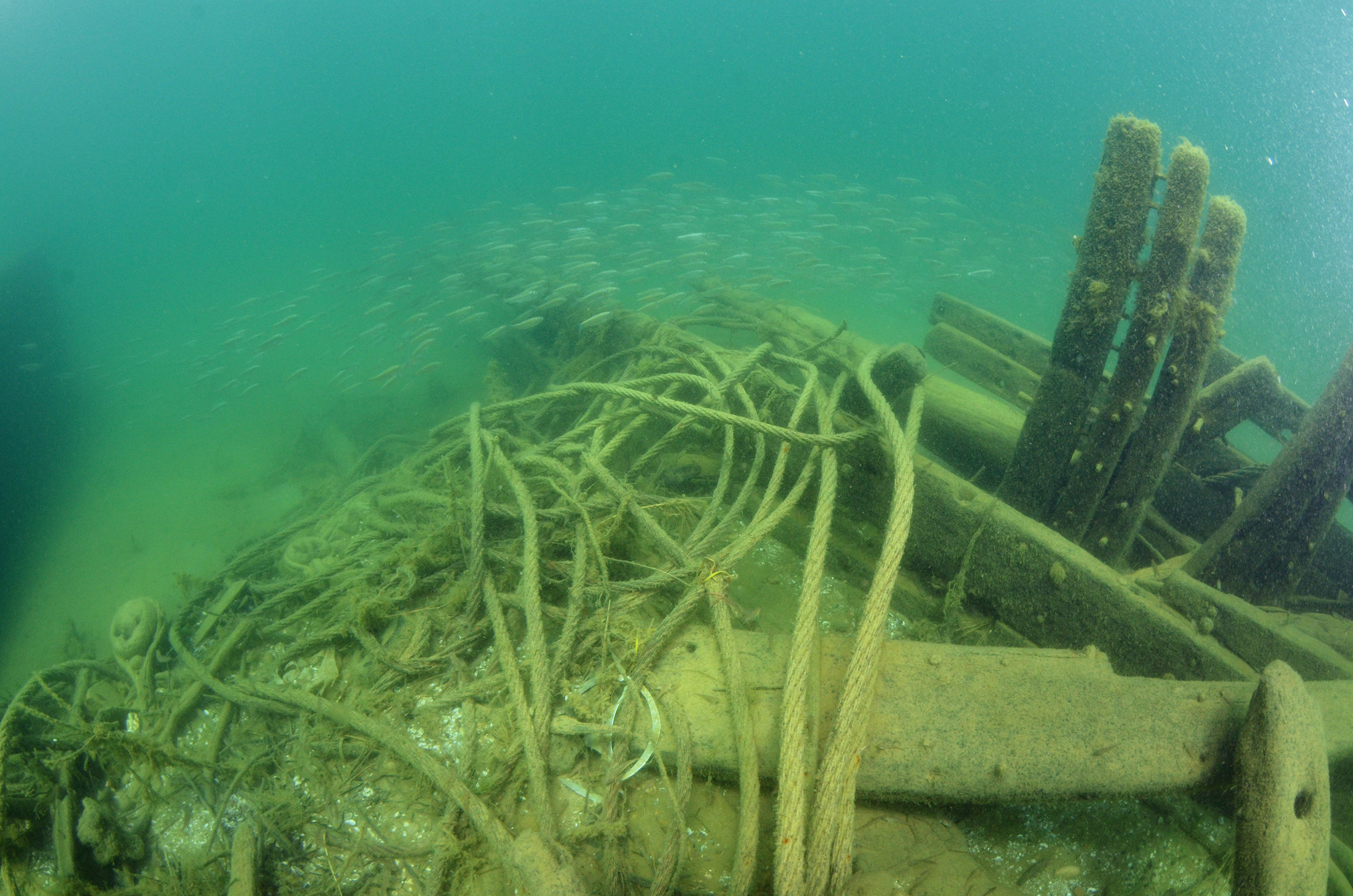
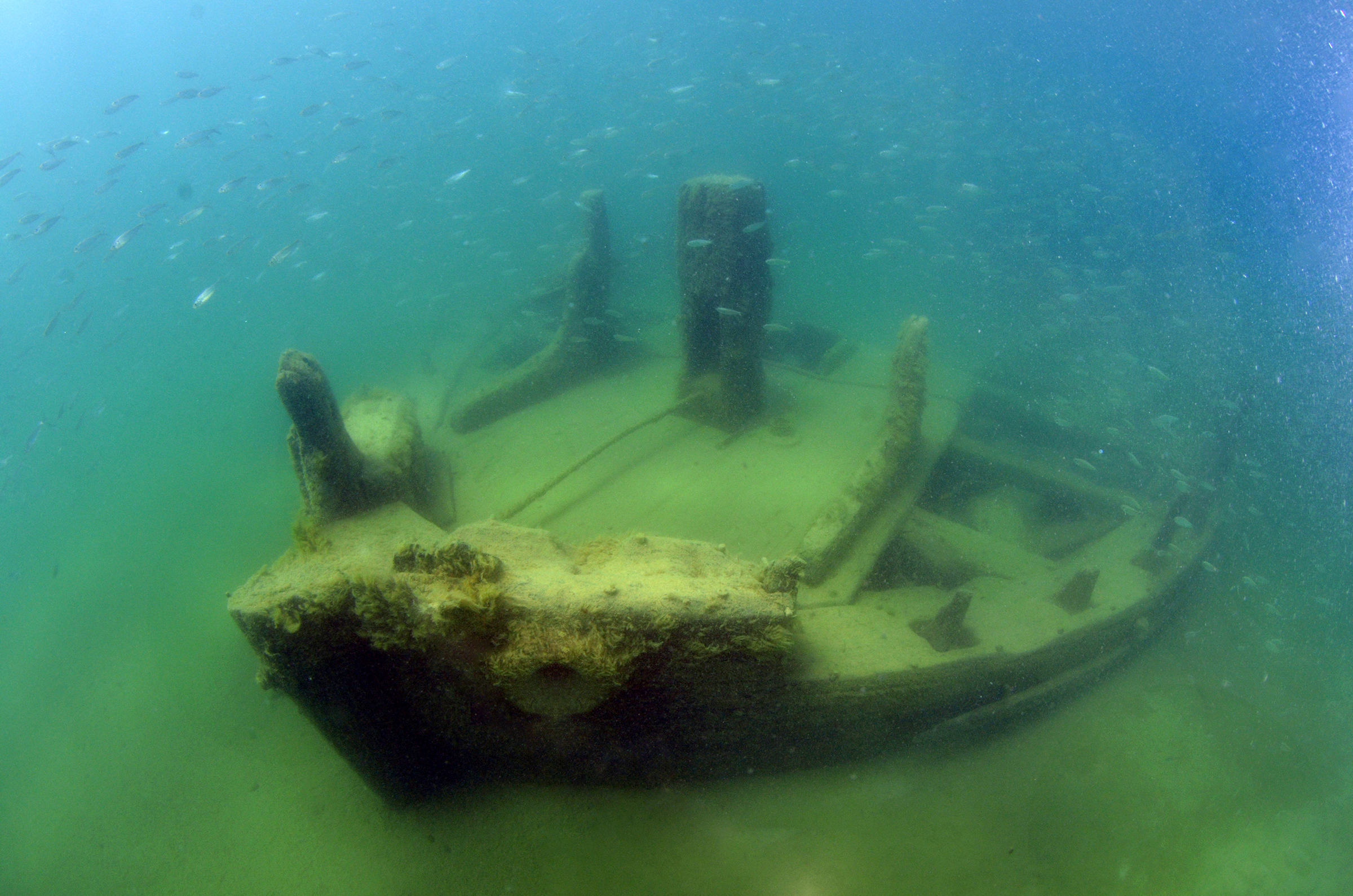
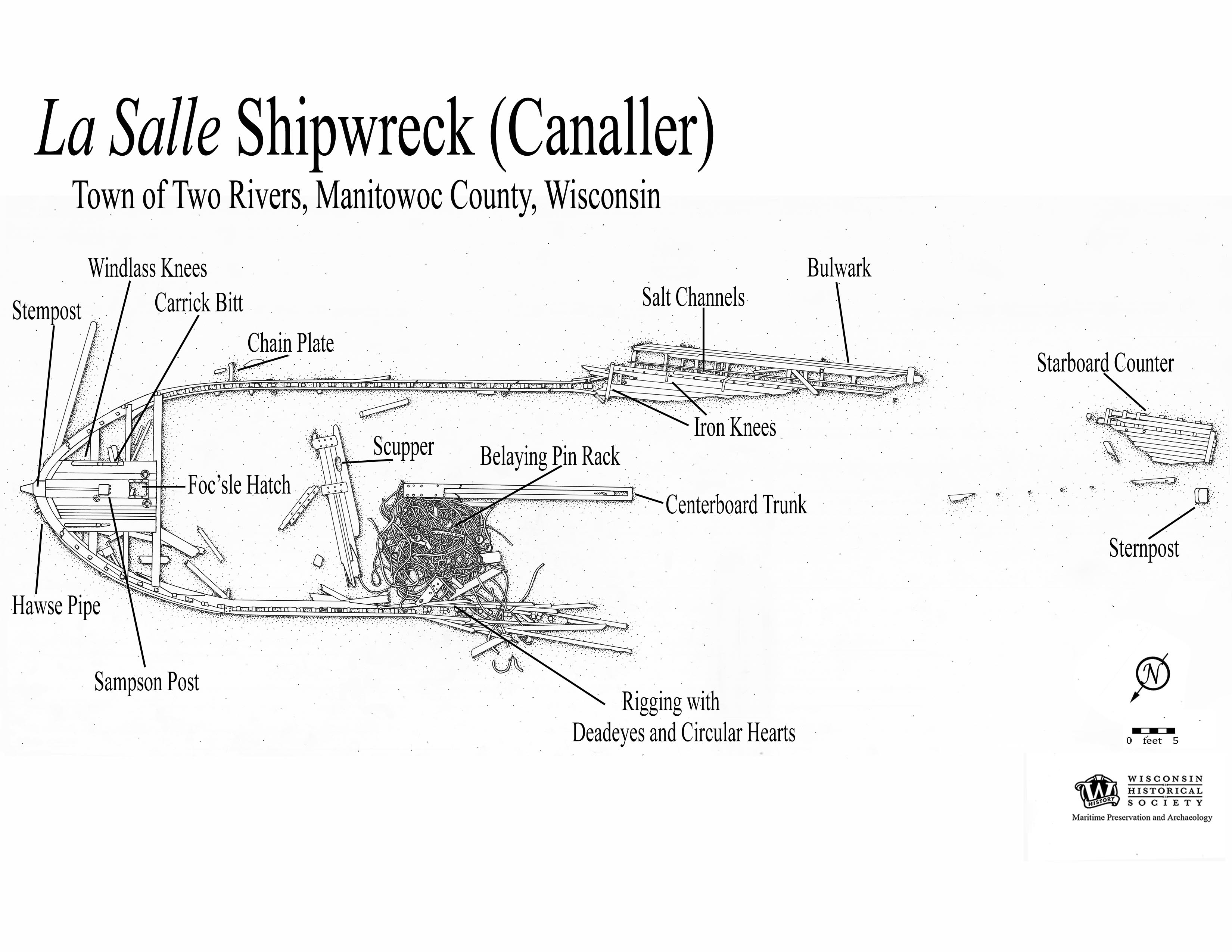
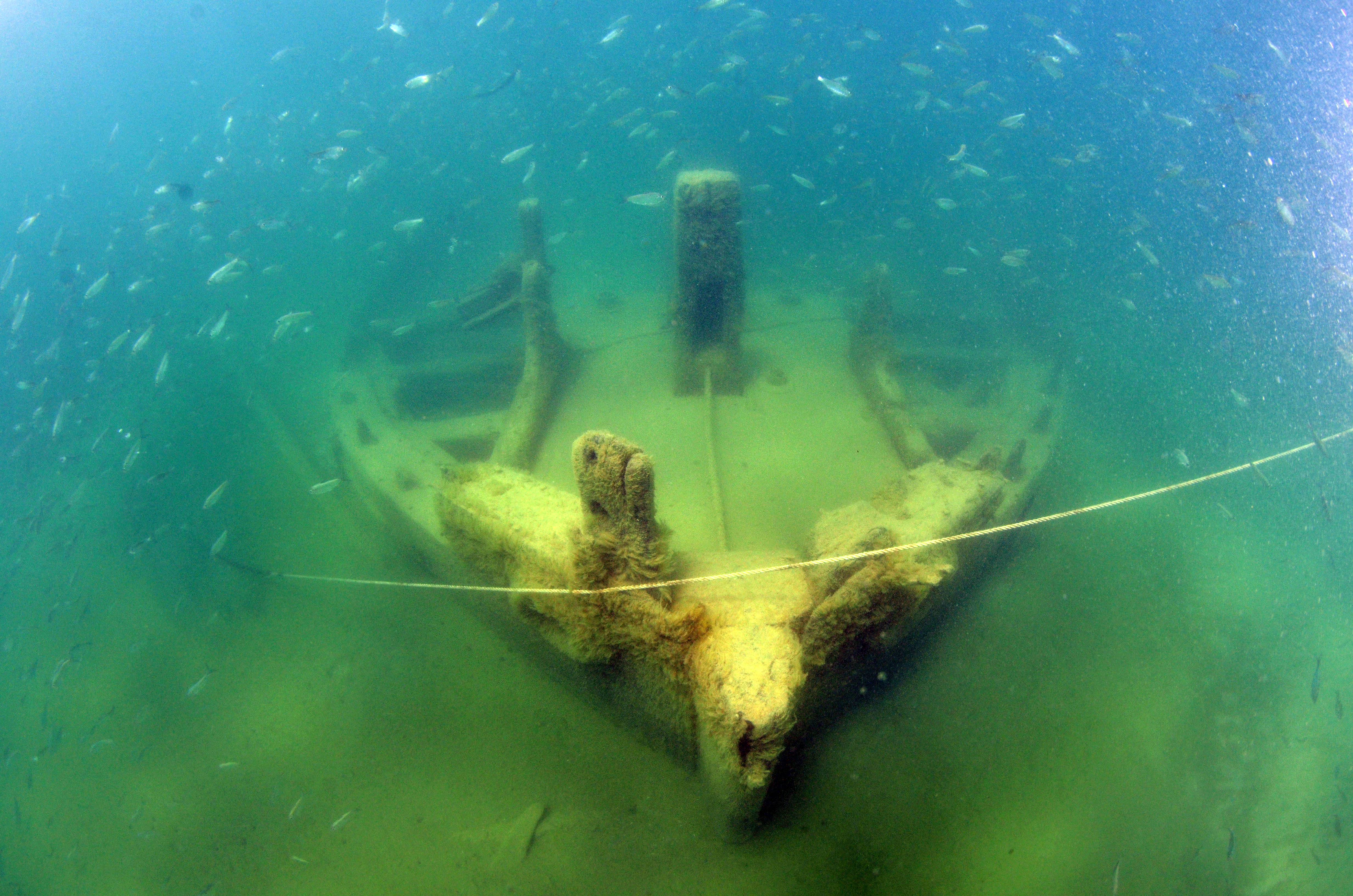
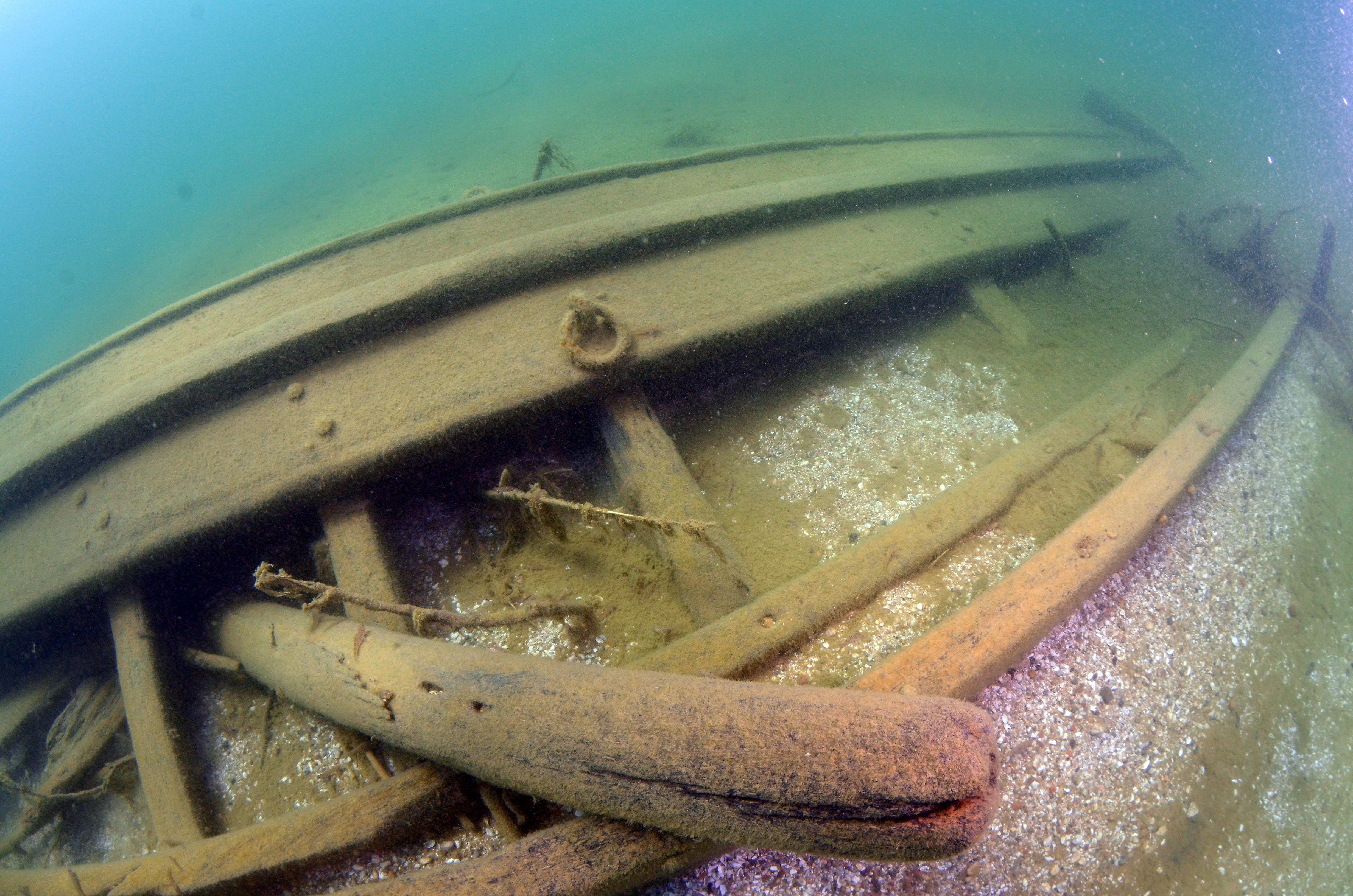
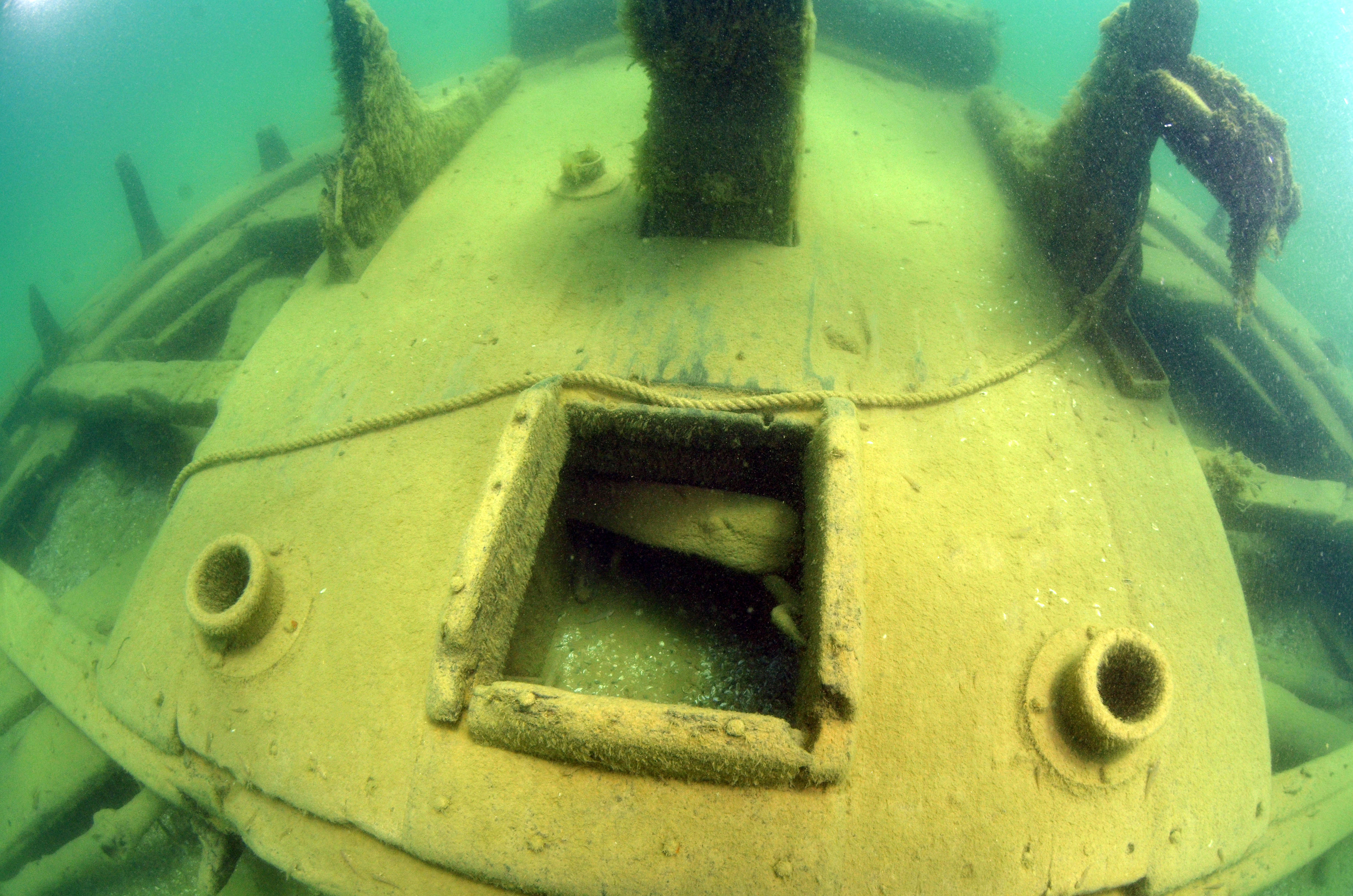
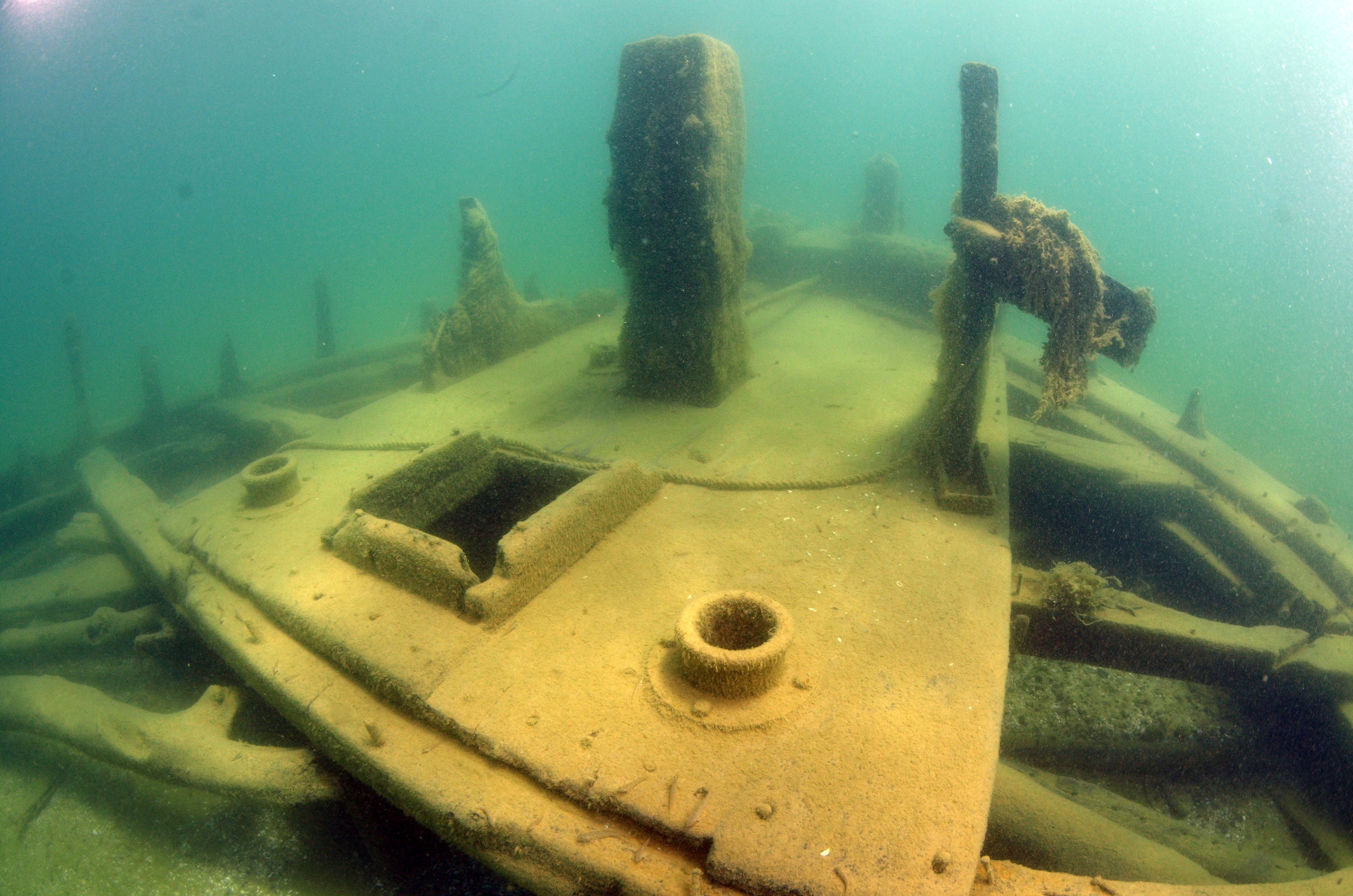
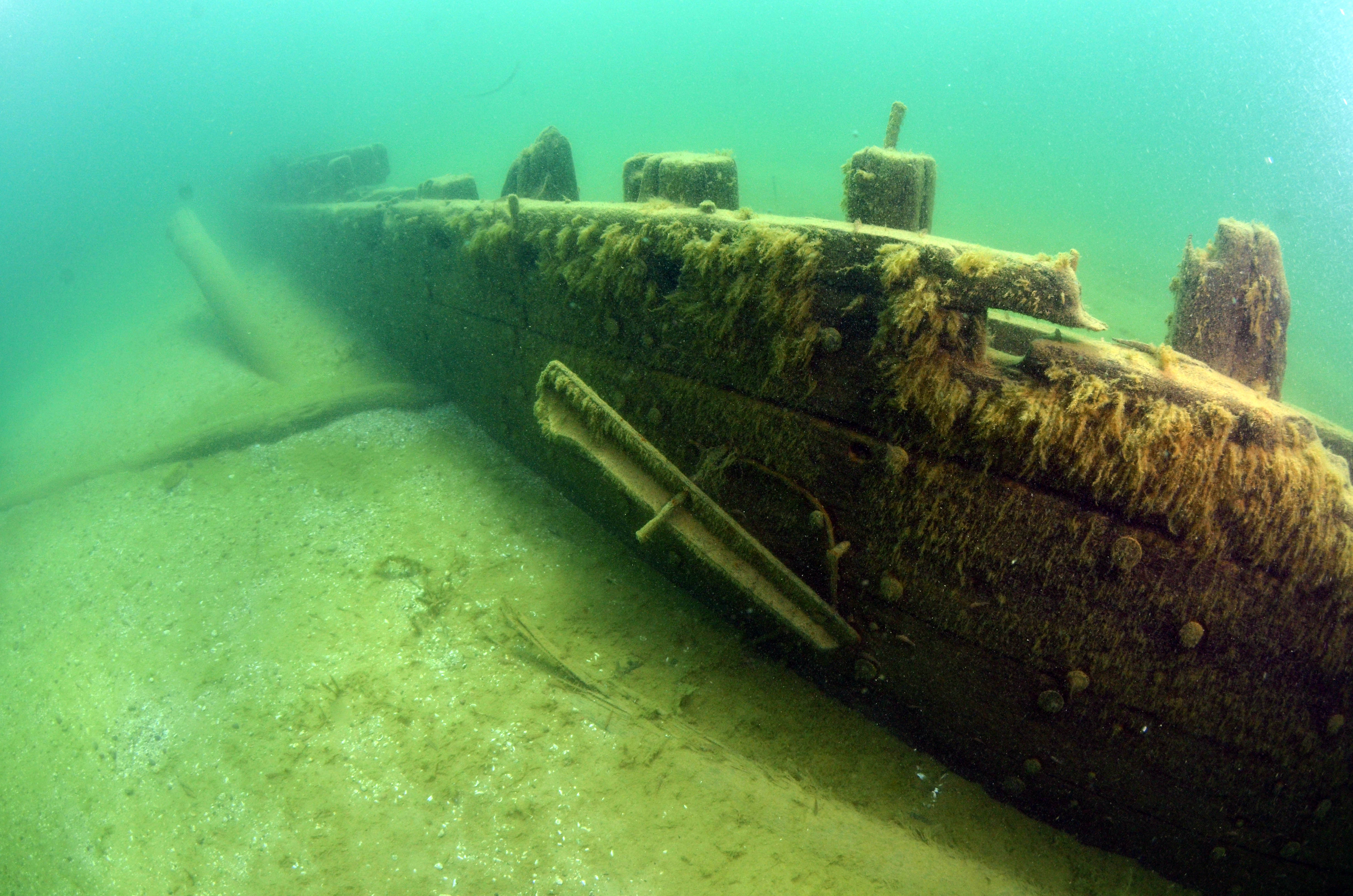
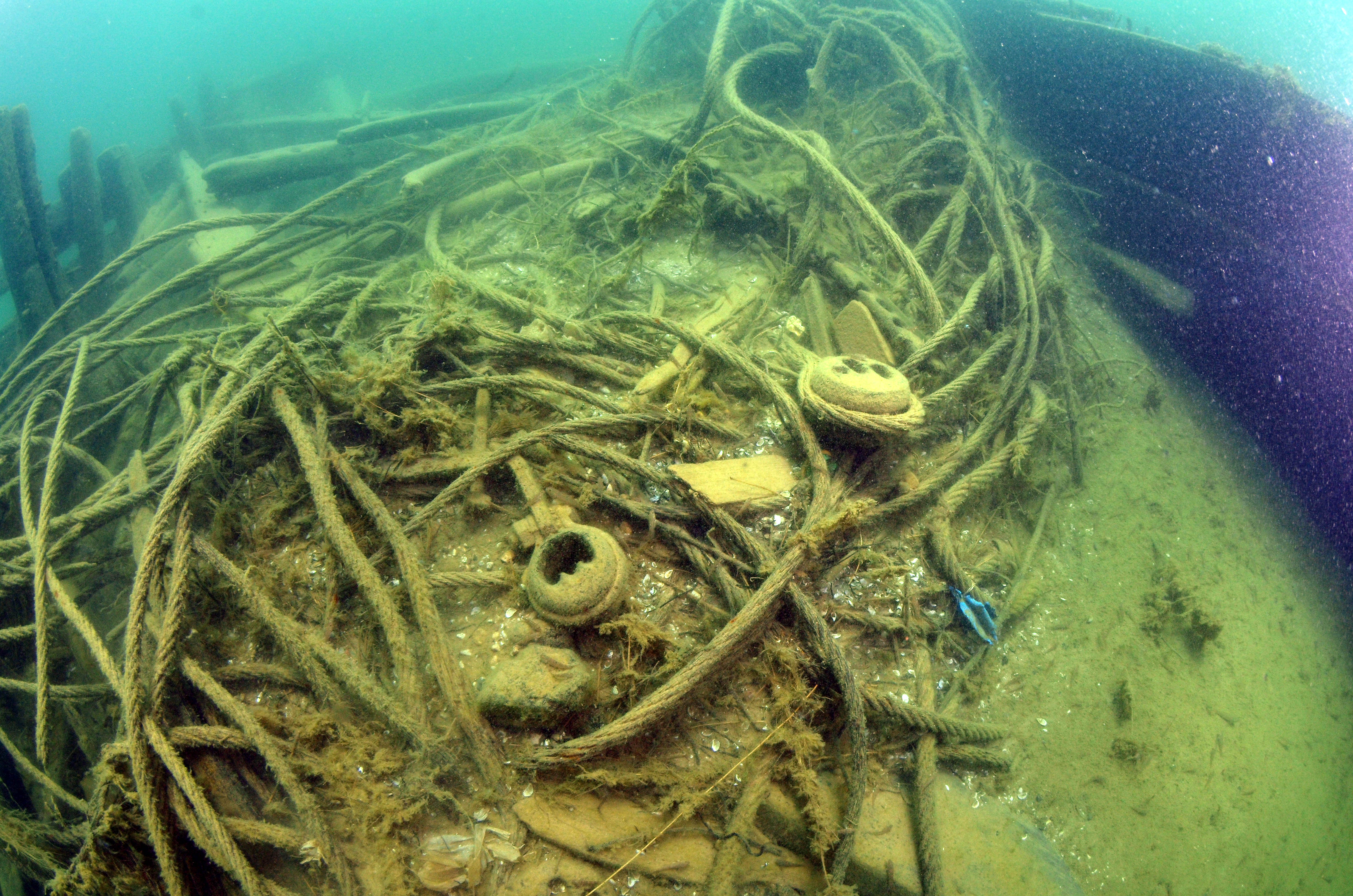
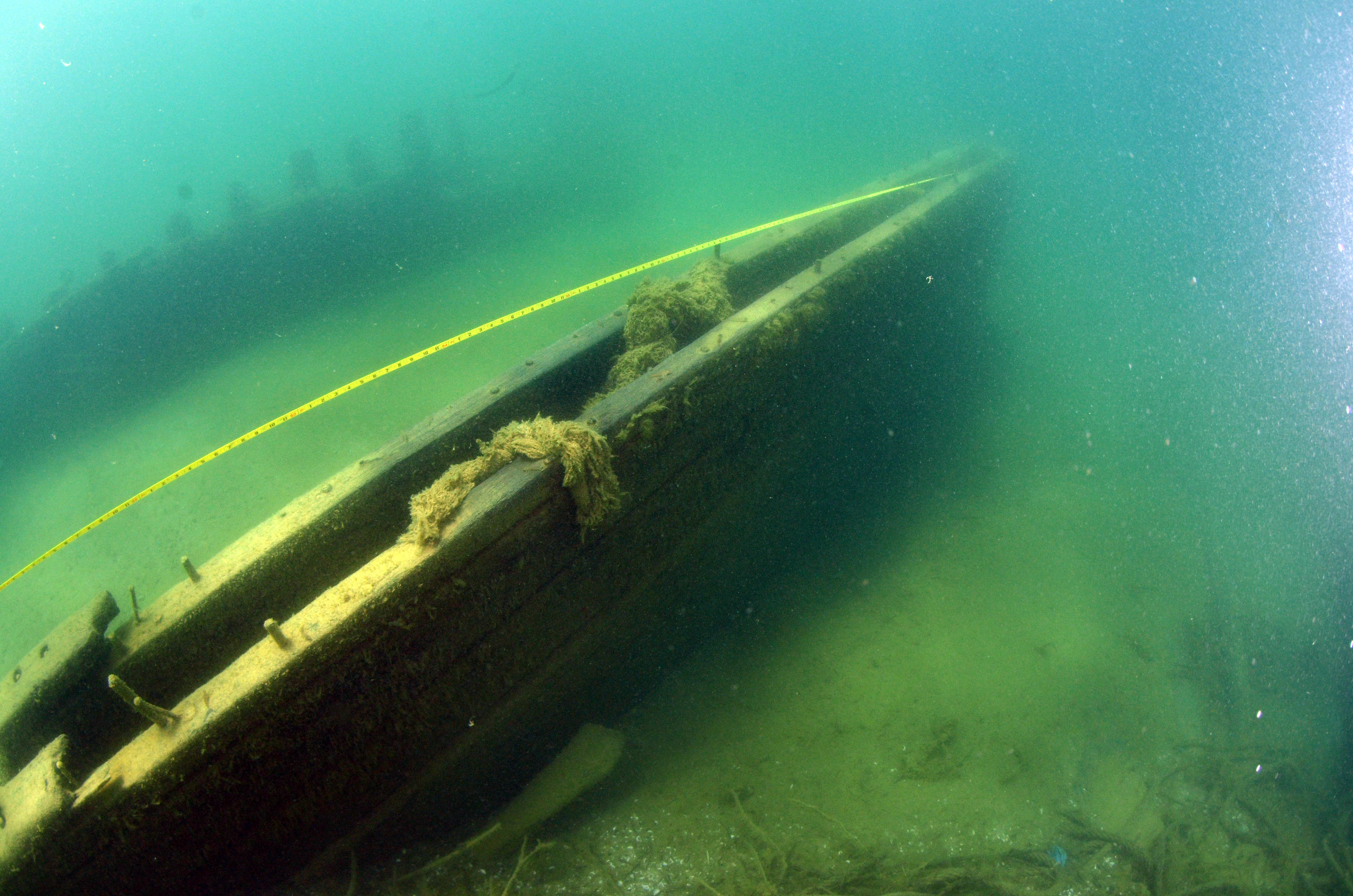

 Confirmed Location
Confirmed Location
 Unconfirmed location
Unconfirmed location